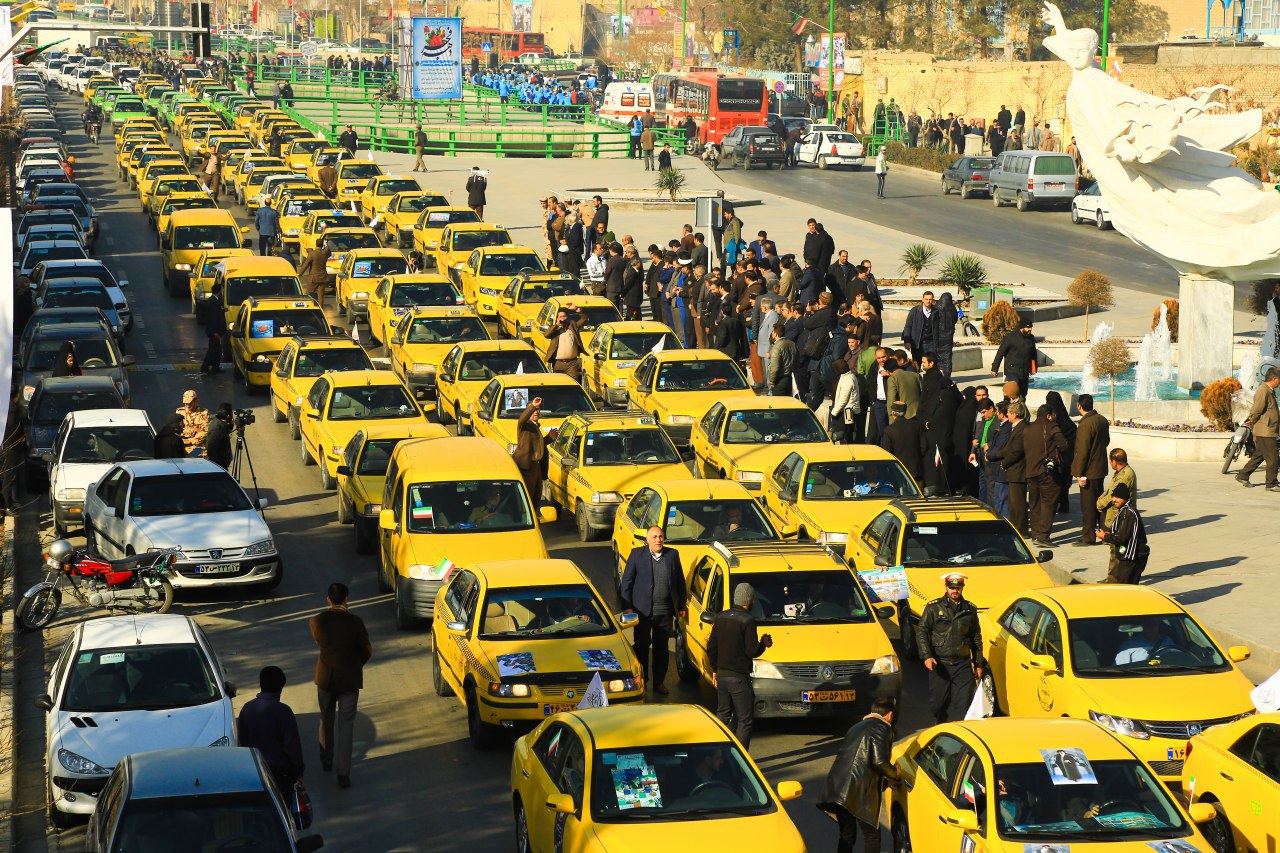Since the outbreak of Covid-19 in Iran in February, Tehran's public transportation system has incurred a massive loss of 1.2 trillion rials ($7 million) per month, a Tehran City Council member declared.
According to Mohammad Alikhani, the head of TCC's Transportation Commission, with the spread of the lethal disease, a majority of people opt for private vehicles over public means of transportation for daily commutation, the council's website Shoraonline.ir reported.
"Normally, the public transport system handled over five million travels a day. The figure has shrunk to less than one million these days, hurting the livelihood of bus and taxi drivers," he said.
“Cab and bus fleets operate with a lot of empty seats, as only 40% of their capacity are utilized. This is while most vehicles on the road are being used for purposes like shopping.”
Alikhani noted that social distancing is ignored in public places such as malls, emphasizing that the problem should be solved as soon as possible.
Social distancing, or remaining at least a meter and a half apart from other people, is considered the most effective way of controlling and cutting the coronavirus infection chain.
To achieve this objective, the government keeps encouraging people to stay home and use private cars for commuting, if they have to.
In addition, the traffic rule employed in the city, called "Traffic Scheme" remains suspended.
The main thoroughfares, especially in the central parts of the city, are always clogged, making commutation a serious challenge for the employed population
The scheme covers central Tehran, in an area limited by Motahari Street in the north, Shariati Street in east, Kargar (west) and Shoosh (south) where cars, except public transportation vehicles, are barred from entering the area between 6 a.m. and 7 p.m. Entering the zone costs up to 520,000 rials ($3) for private vehicles.
However, some challenges have emerged ever since, including a huge loss of income for the public transportation system, including taxis, buses and the subway. The loss of revenue should be added to the extra expenditure spent on disinfectants and protective items used in the fleet.
Furthermore, the main thoroughfares, especially in the central parts of the city, are always clogged, making commutation a serious challenge for the employed population.
New Regulations Proposed
Stressing that unfortunately, a major part of the traffic jam is caused by unnecessary travels across the city, Alikhani said the transportation commission has proposed a new set of transportation and traffic regulations to resolve the problem.
According to these regulations, vehicles used in public transportation, including taxis, buses, vehicles used by ride-hailing companies, company carpool services, school transportation services and telephone-taxis, could be allowed to enter the traffic scheme zone free of charge.
“The medical staff can also benefit from the rule after submitting their ID information on Tehran Municipality's website My.tehran.ir,” Alikhani added.
“In addition, government workers will also be able to enter the restricted zone during the less crowded hours for free, that is before 8 a.m. and from 2-4 p.m.”
He added that the proposed regulations have been approved by Tehran Traffic Police, TCC and TM.
“The government is planning to offer financial aid to public vehicle drivers to partially compensate their losses,” Alikhani said, adding that these proposals are expected to navigate unnecessary travels to the public means of transportation, helping the system use a part of its unused capacity.
Hazardous Vehicles
Talks of using the idle capacity of public transportation have raised concerns over the high risk of contamination in public vehicles.
With the reopening of low-risk businesses in the city from April 11 and the lifting of inter-city traffic restrictions, the partial quarantine observed since late February is gradually ending.
Yousef Hojjat, the head of TM's Transportation and Traffic Organization, said a large number of people who do not own a private car inevitably take a bus or taxi, or use the subway, to get to work.
“Keeping a reasonable distance between passengers becomes almost impossible when the number of passengers keeps rising," he said.
“The virus is still spreading and infecting people in the city and the situation has not normalized. The resumption of social activities can make it tough to handle mortalities related to the disease.”
Similarly, Mohsen Hashemi the chairman of TCC, had said earlier that social distancing is almost impossible in a crowded city like Tehran, unless more buses, taxis and train cars are added to the public transportation fleet.
Hashemi underlined the warnings of Health Ministry and professionals over the risk of contamination in the use of public means of transportation and said, “Public vehicles are more polluted compared to universities and schools. So extra care should be taken by citizens using them.”
Adding to his concerns, Hashemi said the ventilation system of subway trains is concentrated, which means that the air in wagons is constantly circulating and combining with air outside the train.
“This means one infected person in a train car can potentially pollute the air in all cars. There is a strong possibility of the second wave of coronavirus pandemic starting in the city, if nothing is done about the issue,” he added.
Iran reported the virus outbreak in mid-February, which has so far taken the lives of 6,733 people out of a total of 110,767 infected people.
According to Iran’s Health Ministry, 88,357 patients have so far recovered from the disease.


